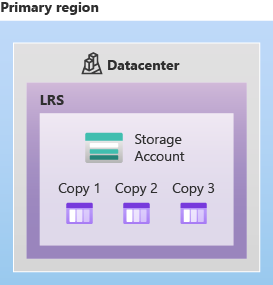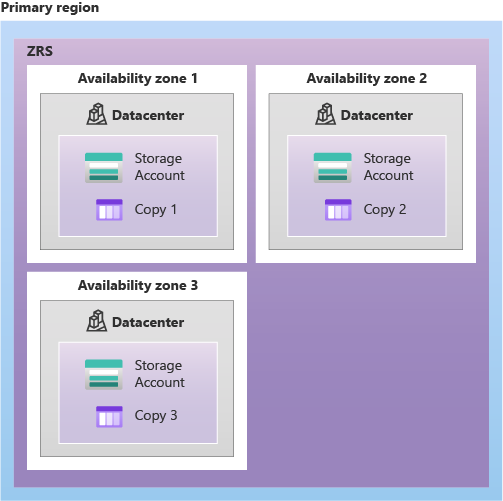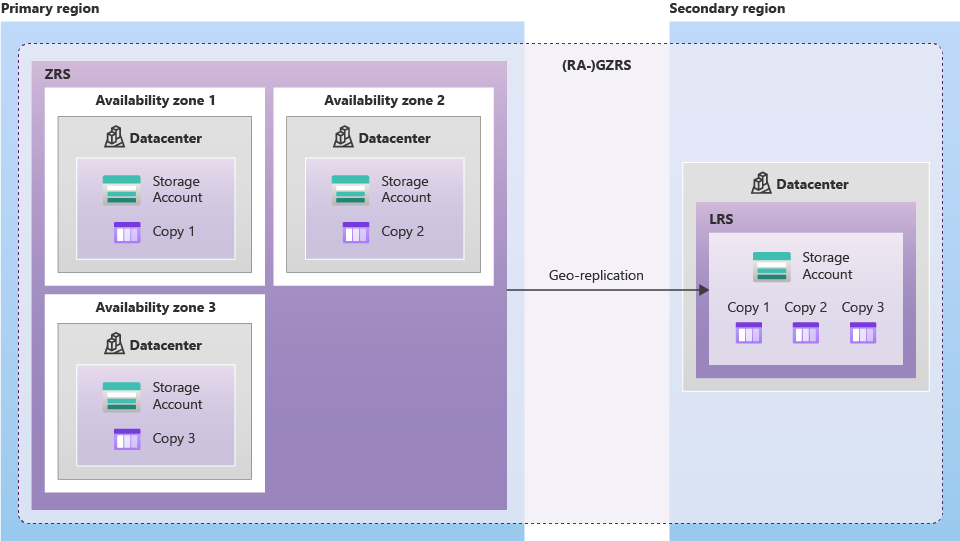Last updated on April 27, 2023
What are the Azure Storage Redundancy Options?
Azure storage redundancy options provide different levels of protection for data stored in Azure. These options ensure that data is available and retrievable in case of failure or data loss. There are several different types of consistency options available in Azure, each with its own features and benefits.
Locally Redundant Storage (LRS) has the lowest level of consistency in Azure storage redundancies. The LRS option stores three copies of the data within a single data center. So even if there is one failure within the data center, your data will still be available. But, if the entire region experiences an outage, your data may not be available anymore. Cost-wise, LRS is the cheapest option. Only use LRS if you can tolerate some degree of data loss.
Zone-Redundant Storage (ZRS) is your best redundancy option when it comes to single-region redundancy. ZRS replicates your data synchronously across three Azure availability zones in your primary region. Remember that each availability zone is a data center with independent cooling, power, and networking. This means that even if there is a failure in one availability zone, your data can still be reached from another availability zone. ZRS provides a higher level of protection than LRS, but it is also more expensive.
Geo-Redundant Storage (GRS) is like the LRS option, but it adds a secondary region for durability. GRS copies your data synchronously three times within a single data center in your primary region. It then copies your data asynchronously to a single data center in a secondary region using LRS, which provides protection against regional and data center failures. This is a much more expensive version of LRS since you have multiple copies of your data in your primary region and another copy in a region, but it also provides a high level of data protection and availability to your data.
Geo-Zone-Redundant Storage (GZRS) protects your data by copying it to three availability zones in the primary region using ZRS. It then replicates data asynchronously to a single data center in the secondary region using LRS. It is similar to GRS and ZRS but also provides a higher level of data protection and availability by storing data in multiple availability zones. GZRS is the most expensive redundancy option. So you should only use this if you have applications that require maximum durability, consistency, availability, and resilience for disaster recovery.
For storage accounts in GRS or GZRS, in the event that you are experiencing an outage, data in the secondary region is not accessible right away to your applications or users unless you initiate a failover. This failover updates the DNS of your storage account. The DNS change will convert your secondary region to your new primary region. Once the failover is successful, your applications or users will have read-and-write access to the new primary region.
Read-Access Geo-Redundant Storage (RA-GRS) is almost the same as GRS, but it provides read-only access to data in the secondary region during an outage in the primary region. This means that even if the primary region is unavailable, the data is still accessible for read-only operations. This is helpful for applications that require read-only operations, even with failure.
Choosing the right storage consistency option for your application depends on your specific needs and budget. LRS is the cheapest option and is suitable for applications that can accommodate some degree of data loss. ZRS provides a higher level of protection than LRS, but it is also more expensive. GRS is the least expensive form of consistency in multi-region redundancy of Azure storage, while GZRS is the most expensive, providing the highest data protection and availability level.





















